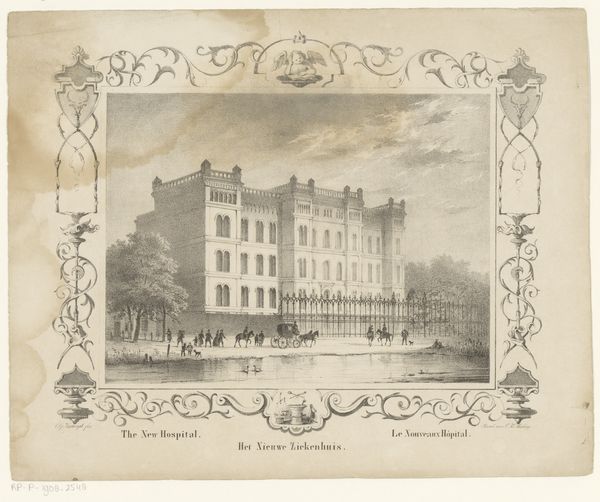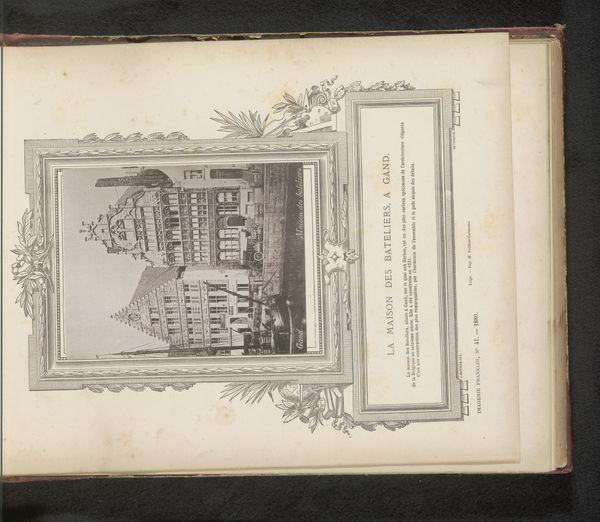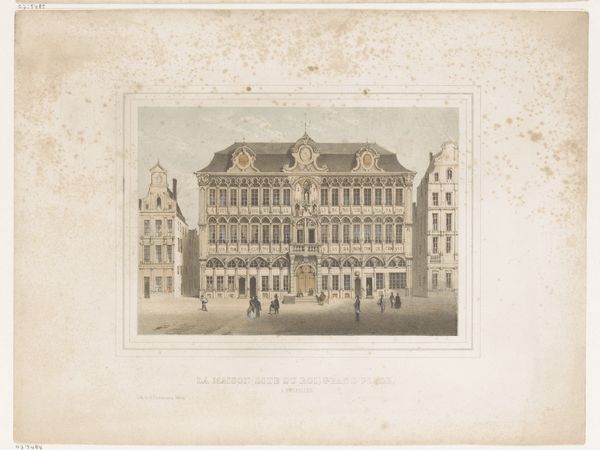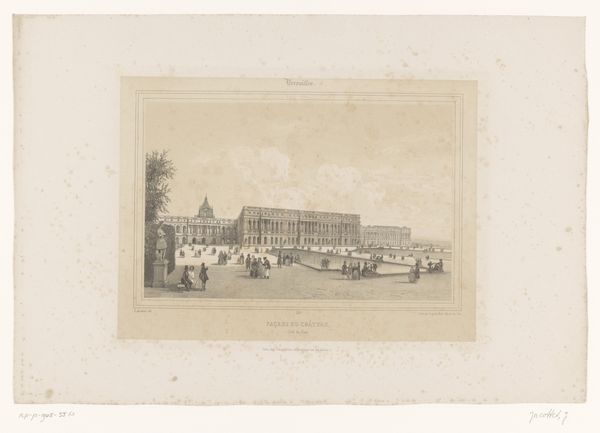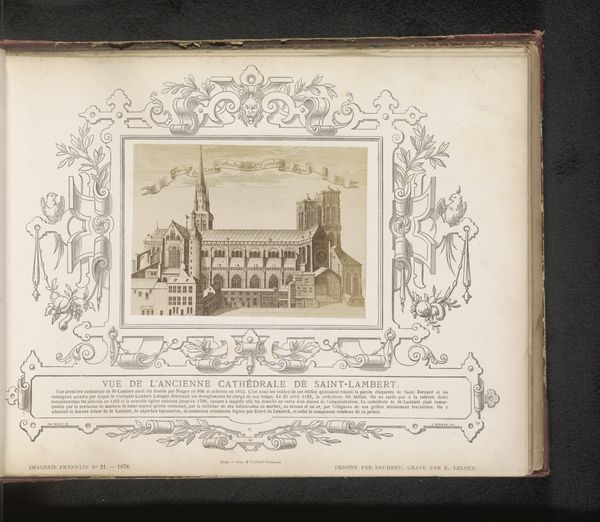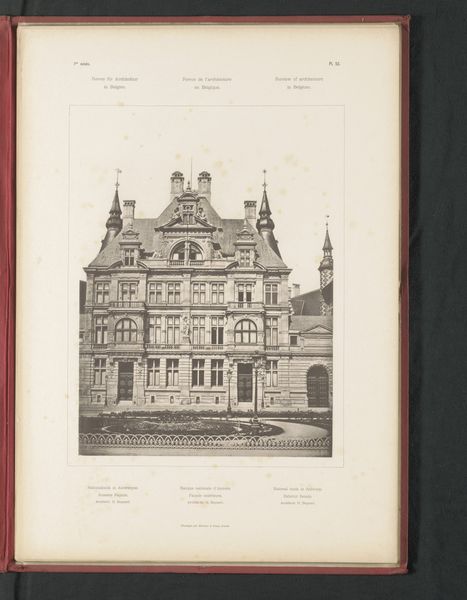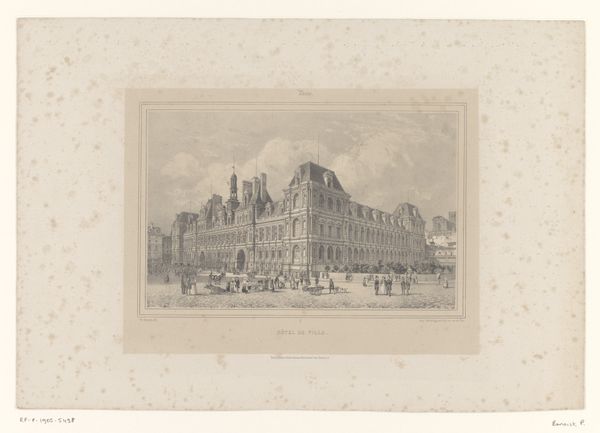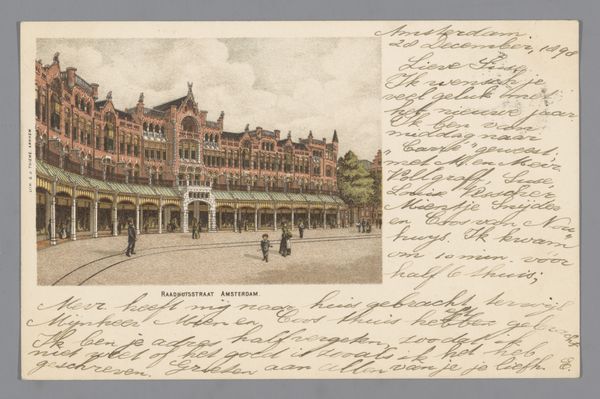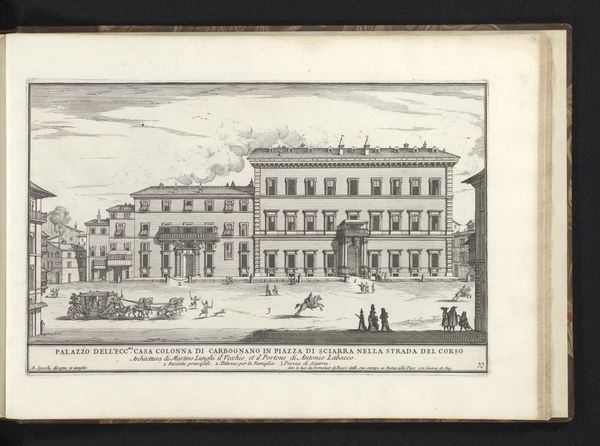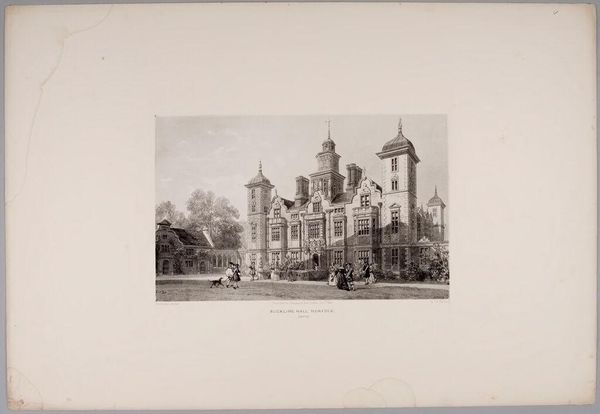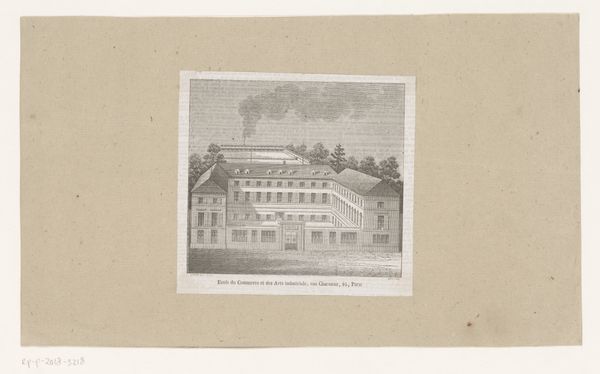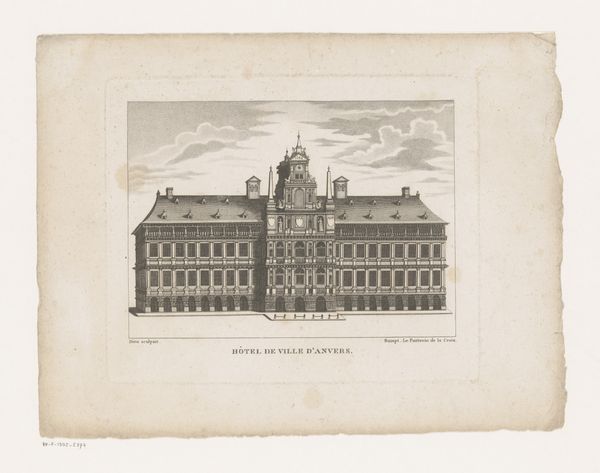
print, photography, site-specific, architecture
#
aged paper
#
toned paper
#
medieval
# print
#
old engraving style
#
sketch book
#
photography
#
personal sketchbook
#
pen-ink sketch
#
site-specific
#
pen and pencil
#
pen work
#
sketchbook drawing
#
cityscape
#
sketchbook art
#
architecture
Dimensions: height 94 mm, width 124 mm
Copyright: Rijks Museum: Open Domain
Curator: What a wonderfully evocative image. This is a photograph titled "Binnenplaats van het huis van Plantin-Moretus in Antwerpen, België," placing us in the courtyard of the Plantin-Moretus house in Antwerp, Belgium. The photograph likely dates from before 1879. Editor: It feels hushed, almost reverential. The monochromatic palette certainly contributes to that mood, and there's a beautiful interplay between the architecture itself and the creeping vines, almost like nature reclaiming what was once exclusively human-made. Curator: That contrast between nature and architecture really speaks to me. The Plantin-Moretus house wasn't simply a dwelling; it was the heart of a massive printing enterprise. Imagine the labor, the social dynamics within those walls. The ivy, for me, becomes a poignant symbol of the slow passage of time, subtly eroding that former industrial power. The labor associated with the industrial complex can then be seen as inherently entwined with the notion of that building. Editor: Yes, and if we consider what was produced there, printed material and books, these could serve as symbols for the distribution of information and knowledge. The courtyard becomes a nexus, and those open archways seem to beckon, promising entry into a space where ideas were actively disseminated to broader publics. Curator: Precisely. The open arches and symmetrical architecture serve a crucial role within systems of power and surveillance. Editor: Thinking about this as an older photograph, the sepia tones give the architecture and courtyard this patina of memory. Courtyards often represent enclosed, private spaces but also gathering spaces where individuals interact. Curator: Indeed. It is an interplay between the private life and a space where business practices occur and expand. One can analyze this interaction of the architecture as the backdrop of how printing press mogul Plantin successfully conducted his business. Editor: Thank you, by engaging with the symbolism of the photograph, the intersection of industry, the passage of time, and social structure become visually more engaging. Curator: Exploring this photographic object using both our perspectives illuminates how intertwined the historical realities and lasting symbolic language exist.
Comments
No comments
Be the first to comment and join the conversation on the ultimate creative platform.

